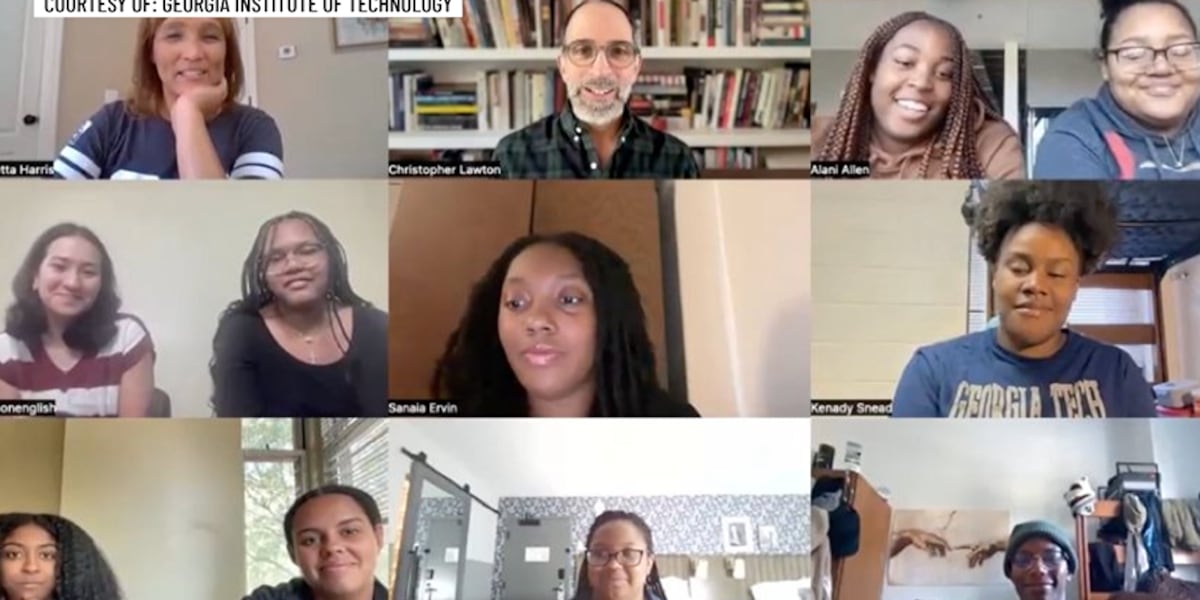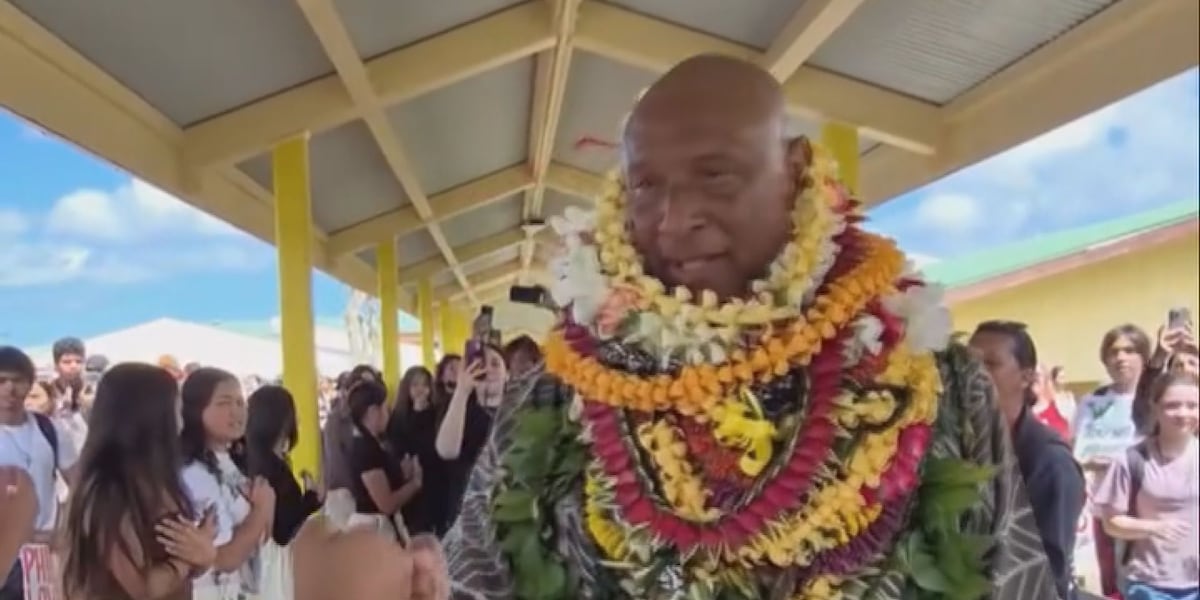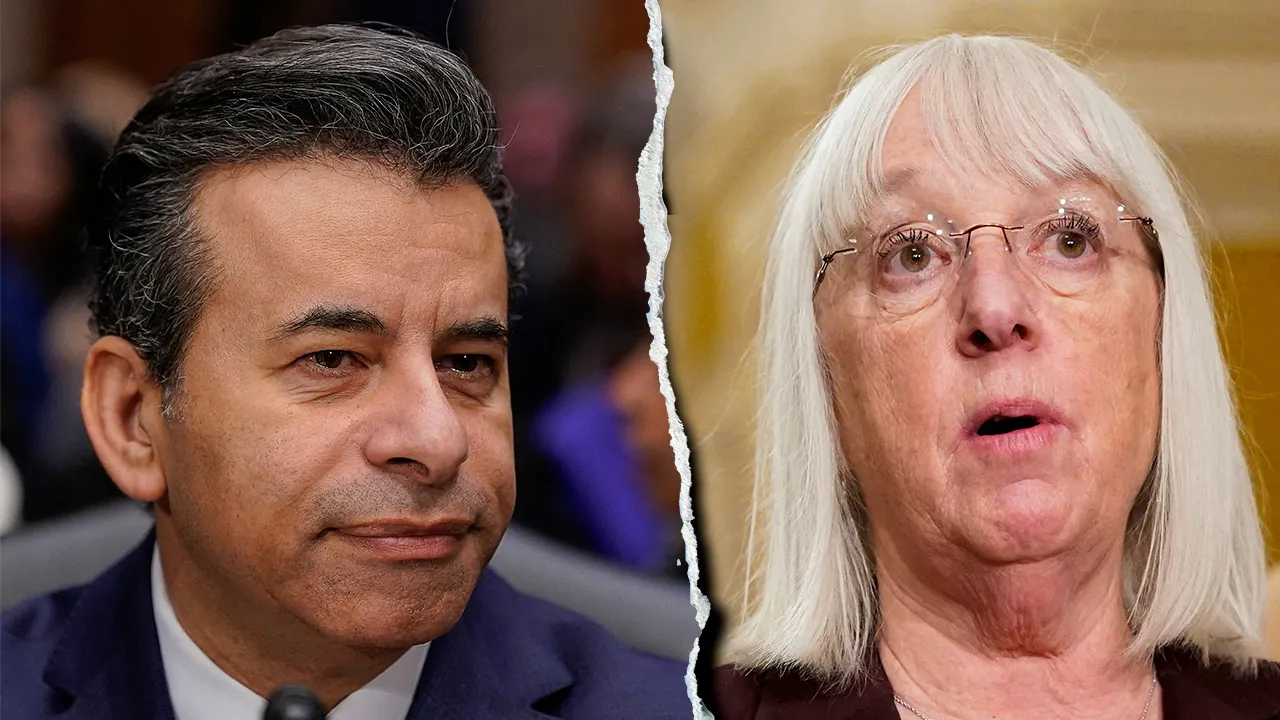Seattle, WA
Mayor Bruce Harrell Signs Legislation Sending Transportation Levy to Seattle Voters – Office of the Mayor

Levy will build sidewalks, pave streets, repair bridges, and improve transit for a safe, reliable, and connected Seattle
Seattle – Today, Mayor Bruce Harrell signed into law the legislation that will place the Transportation Levy on Seattle voters’ ballots in November 2024. The legislation was unanimously approved in a 9-0 vote by the City Council on Tuesday.
If approved by voters, the eight-year $1.55 billion Transportation Levy will provide funding to enhance the city’s transportation infrastructure including building sidewalks, paving streets, repairing bridges, and improving transit connections. The levy includes investments in the safety, maintenance, and modernization needs of Seattle’s transportation infrastructure and incorporates robust community input.
“For the past 18 years, Seattle voters have consistently shown their commitment to maintaining and improving our city’s transportation infrastructure,” said Seattle Mayor Bruce Harrell. “This Transportation Levy is a detailed action plan to build on that effort, addressing the urgent needs of our streets, bridges, sidewalks, and transit systems. These investments will help Seattleites get where they need to go and enhance safety across our transportation system, no matter how they get around – bolstering bridges, strengthening connections to light rail and transit, and improving routes to walk, bike, and roll.”
The current Levy to Move Seattle, which expires at the end of 2024, represents roughly 30% of the Seattle Department of Transportation’s budget. The proposed Transportation Levy would renew and expand this funding source to build a broad range of projects reflecting the city’s evolving transportation needs and priorities.
“This consensus levy is about us all coming together to invest in a better future for our city,” said Seattle City Councilmember Transportation Chair Rob Saka. “This levy is about building a stronger, more reliable transportation system. It’s about saving lives by making critical safety improvements on our roads. It’s about creating good, living-wage, union jobs for people in our community. It’s a big investment to be sure, but it’s one that we’re making with utmost accountability and care. The people of Seattle are worth it.”
Highlights of the Transportation Levy include:
- 350 new blocks of sidewalks and walkways (about 22 miles) and 34,000 repairs to existing sidewalks.
- 160 projects to improve bus trip reliability and connect people to light rail stations while prioritizing safety, reliability, and accessibility.
- A new preventative bridge maintenance program and planning for longer-term replacements.
- 15 paving projects to maintain and modernize Seattle’s streets and get people and goods where they need to go.
- Improvements to Seattle’s bicycle network with new protected bike lanes, added bike lane barriers, regular bike lane sweeping, completing the gap in the Burke-Gilman Trail, and more bike facilities in south Seattle.
“SDOT is ready to deliver on this balanced and practical investment program to maintain and modernize Seattle’s streets, sidewalks, bridges, bike lanes and transit connections, over the next 8 years,” said SDOT Director Greg Spotts. “We appreciate the deep and thoughtful collaboration with a wide range of Seattle community members and organizations who helped shape this levy for consideration by Seattle voters.”
Seattle’s transportation system is critical to a thriving city that connects people to places and opportunities. Levy funding allows SDOT to attend to the basics of the city’s transportation infrastructure while providing important investments for safety, climate, and communities. The proposed levy balances investments with affordability, and would cost the owner of a median-value Seattle home about $44 per month, an increase of about $21 per month compared to the current levy.
Key Transportation Levy investments include:
- $403 million to repave arterial streets that carry the most buses, trucks, and cars, and improve infrastructure for people walking, rolling, biking, and taking transit.
- $221 million to keep bridges and structures in reliable working condition and prepare for future bridge projects.
- $193 million to build and repair sidewalks, crossings, and curb ramps so people walking and rolling can safely get to where they need to go.
- $160.5 million to make targeted Vision Zero and community improvements to streets, sidewalks, intersections, and crossings to reduce traffic collisions, severe injuries, and fatalities.
- $151 million to connect people safely to transit hubs, including Link light rail stations and bus stops; and reduce delays on bus routes.
- $133.5 million to expand Seattle’s protected bike lane network; connect schools to bike lanes, paths, and neighborhood greenways; and maintain and upgrade existing bike lanes.
- $100 million to install, maintain, and upgrade traffic signals for safe, reliable movement; improve pedestrian and bike accessibility signals; and support traffic operations during large events, incidents, and for trips in and out of the port.
- $69 million to address climate change directly, reducing air pollution and making sustainable transportation options more available.
- $66.5 million to activate public spaces and improve lighting in partnership with business districts and community organizations so people can enjoy unique and vibrant neighborhoods and business districts.
- $45 million to make freight improvements to support trucks delivering goods and providing services.
- $7.5 million to ensure good governance and equitable implementation.
Background
Seattle residents have a long history of supporting transportation levies to improve the city’s infrastructure. The 9-year, $930 million Levy to Move Seattle, passed in 2015, has funded significant improvements to the city’s transportation network, as did the 2006 Bridging the Gap levy.
Citywide outreach for the new levy included 85 briefings with community-based organizations, four roundtables between 60 stakeholder groups and Mayor Harrell, 30 one-on-one meetings with Director Spotts, nine public events at neighborhood gatherings where staff talked to almost 1,000 people, multicultural and multilingual ad campaigns and media engagements, and online resources viewed by more than 13,000 people.
These engagement opportunities helped community members and businesses review the levy proposal and share feedback. This outreach included a special effort to engage people and populations that have been underrepresented in past transportation planning and funding efforts, including people who speak languages other than English.
The Transportation Levy proposal builds on important plans that Seattle residents shaped, including the Seattle Transportation Plan and the draft One Seattle Plan. The proposal brings together the priorities the public has shared, the essential needs the City has identified, and the funding resources to deliver.
For more information about the Transportation Levy, please visit seattle.gov/transportation/levy.
What People Are Saying
Rachel Smith, President and CEO, Seattle Metropolitan Chamber of Commerce
“Thank you to Mayor Bruce Harrell, Seattle City Council Transportation Chair Rob Saka, and the entire city council for their leadership to send a transportation levy renewal to voters. This package reflects feedback from employers large and small from across the city, and makes progress on the greatest needs, balanced with affordability concerns. A thriving, equitable, and inclusive regional economy – which is our mission – is predicated on Seattleites being able to safely and reliably get to work and to school and back home to their families, as well as enjoy the natural beauty and recreational and cultural opportunities that surround us. This proposal, if approved by voters, helps get us there.”
Lee Lambert, Executive Director, Cascade Bicycle Club
“Cascade Bicycle Club would like to thank the City Council and Mayor Harrell for creating a Seattle Transportation Levy that will make it safer and easier for more people to bike. The funding included in the levy for bike network improvements will greatly improve safety for everyone – especially in South Seattle, where investments in safe places to bike lag the rest of the city. This levy means that more people will have an easier choice to bike to school, grocery stores, and to the bus or light rail. For example, people will be able to bike seven miles from Capitol Hill to the bottom of Beacon Hill on a protected bike lane when this levy is complete.”
Katie Garrow, Executive Secretary-Treasurer, MLK Labor
“Workers rely on decent roads and bridges to get to work and safe sidewalks for our kids to get to school. The next levy to Move Seattle will deliver much needed improvements to our current transportation infrastructure.”
Monty Anderson, Executive Secretary, Seattle Building & Construction Trades Council
“The investments in this bold proposal will improve transportation in a growing Seattle, and they will build better lives by creating thousands of good, family-wage construction jobs for skilled craftspeople. These projects will bring hundreds of new entrants into the construction field, through apprenticeships and training, and provide pathways out of poverty for women, people of color, veterans and others who are disadvantaged into construction careers.”
Cecelia Black, Seattle Transit Organizer, Disability Mobility Initiative, Disability Rights Washington
“For too long, the disability community has fought against a narrative that sidewalks are an add-on luxury to our transportation system. This levy marks a key shift in that narrative. For the first time, we have a city council and mayor’s office fully acknowledge the seriousness of our sidewalk crisis and commit to changing the status quo. If passed, the levy will increase Seattle’s rate of new sidewalk construction by over 40% and creates a pathway for a longer-term funding plan that can adequately address the scale of the need. We still have a long way to go but I am hopeful that this levy is a first step to creating an accessible transportation system within my lifetime.”
Kirk Hovenkotter, Executive Director, Transportation Choices Coalition
“No matter who you are, this levy will make it safer and easier for you to get around Seattle. In addition to making a historic investment in sidewalks, this levy will fund transit improvements and bike lanes, neighborhood-identified safety projects, and the basic maintenance of our transportation infrastructure. Voters will soon have the opportunity to make a generational investment in our city’s transportation future.”
Seattle Department of Transportation’s Transportation Equity Workgroup
“SDOT’s Transportation Equity Workgroup (TEW) is excited by the contents of the Seattle Transportation Levy. The TEW worked closely with SDOT to integrate the values of the Transportation Equity Framework (TEF) into the levy proposal so that our most overlooked communities can benefit from levy investments. We thank community members, allies and transportation advocates who championed the $41 million dollar Neighborhood Initiated Safety Partnership Program, which empowers marginalized community members to drive decisions and planning processes. Community-led equitable investments in transportation that center low-income, BIPOC, immigrant, refugee, disabled and aging communities is essential to uphold the City of Seattle’s Race and Social Justice Initiative (RSJI) Ordinance. The levy ensures that future transportation developments reflect community identified concerns, putting resources into people and places historically underinvested in, leading to informed decision making and a city that works for everyone.”
Don Blakeney, Executive Director, U District Partnership
“The Seattle Transportation Levy is a critical investment in the future of Seattle’s neighborhoods, like the U District. As one of the fastest growing economic centers in the region, the U District will greatly benefit from much-needed levy projects that aim to improve safety and mobility for everyone who walks, rolls, drives and rides to and from the neighborhood.”
Alex Hudson, Executive Director, Commute Seattle
“Making sure our transportation system is reliable, safe, and efficient is critical for Seattle’s health and prosperity. As more and more people choose and rely on walking, biking, and public transit for their commute and other trips, investments in a seamless experience mean less time stuck in congestion and keep Seattle connected to opportunity and each other. This levy package supports the infrastructure needed to keep people and goods flowing around the heart of our city, and that’s essential for downtown’s continued revitalization.”
Goran Sparrman, Interim CEO, Sound Transit
“Infrastructure improvements funded by the Transportation Levy will improve transit connections and support Sound Transit’s mission to connect more people to more places. Sound Transit and the City are working together to create a more connected, more productive region by making it easier and safer for people to take transit to jobs, housing, and the many opportunities the Seattle area offers.”
Toshiko Hasegawa, Vice President, Port of Seattle Commission
“The Port of Seattle relies on a robust transportation system that moves people and goods throughout our city. The freight moving through our Northwest Seaport Alliance cargo terminals, passengers traveling to and from SEA, and recreational activities at our cruise terminals and marinas all rely on the city’s transportation network. A strong transportation system promotes the economic vitality of the city. We look forward to working with the City on implementing the significant investments that will serve our ground, air, and maritime transportation sectors which will ultimately encourage further investment by the private sector in the movement of freight and will support the economic, sustainability, and livability goals enumerated in the Seattle Transportation Plan.”
César García, Co-Director at Lake City Collective
“We commend the Select Committee on the 2024 Transportation Levy for their thoughtful consideration and deep discussions of the Mayor’s proposal, and the City Council at large for approving it. Our City deserves better infrastructure now for you and me and for the future of our kids, especially those who, in every corner of the city, have been left behind. It will be in the hands of our fellow Seattleites to join us in that effort, to make Seattle the safest, and the most equitable it can be across transportation modes for many years to come.”

Seattle, WA
Seattle and King County Grapple with Federal Disinvestment and Threats – The Urbanist

Seattle Councilmember Rinck and King County Councilmember Balducci are leading efforts to weather Trump-triggered storms on multiple fronts.
The City of Seattle and King County, like cities and counties across the nation, are reeling from both immediate and anticipated impacts from the second Trump administration. From precarious local budgets to the loss of civil rights of our most marginalized communities to the risk to basic services many people depend on, we are living in a vastly different landscape than we were a few short months ago.
But local elected officials are stepping up to try to chart a course forward.
Seattle’s new Committee on Federal Policy Changes
On January 31, less than two weeks after Donald Trump took office as President of the United States, Seattle Councilmember Alexis Mercedes Rinck proposed creating a new Select Committee on Federal Administration and Policy Changes.
“Many organizations, programs and people within Seattle rely on federal funding to carry out their work and live healthy lives,” Rinck wrote at the time. “What is clear is that major changes are underway on the federal front, and local leaders must be tuned in.”
President Sara Nelson agreed to form the new committee, with Rinck serving as its chair. Its first meeting will be this Thursday, March 6 at 2pm and will feature round tables for community partners and City offices focusing on the issues of LGBTQ rights, reproductive rights, immigrant rights, and labor protections.
“As the chair of the select committee on Federal Administration and Policy changes, I’m focused on how federal policy shifts directly impact Seattle residents’ everyday lives,” Rinck told The Urbanist. “This committee was specifically established to address all the cascading effects from these federal administration policy changes on our community services and protections. We’re trying to take a more proactive approach to identify challenges and develop local responses that safeguard Seattle residents’ rights and well being.”
Financial impacts on Seattle
Last week Seattle joined a lawsuit with 15 other cities and counties that is challenging retaliatory actions of the Trump administration against so-called “sanctuary cities,” which include withholding federal funds from municipalities that don’t cooperate with federal immigration officials carrying out civil immigration enforcement.
“The loss of millions in federal grants and support would have an immediate and devastating impact on these vital [safety] programs,” Mayor Bruce Harrell said in a press release. “When Seattle’s local values, policies, and priorities are challenged by illegal federal actions, we will not hesitate to do everything in our power to defend our people and our rights.”
Seattle received $207 million in federal funds in 2023, although $50 million were one-time Covid relief dollars. Of the remaining $157 million, $26 million were allocated to transportation, $23.5 million to medical assistance, $12.25 to public safety and security programs, $11.5 million to housing, $9.2 million for programs to assist the elderly, and $8.9 million to the clean water state revolving fund.
The report on federal funds received by Seattle in 2024 should be completed in the next few months.
Rinck highlighted two different streams of funding that her committee will be considering. “There’s the funding that the City of Seattle as a government receives directly from our federal government, and then there’s the ways in which federal funding is showing up within our city broadly, whether it be at research institutions or any of our service providers that have direct federal grants,” Rinck said.
An example of the latter is funding for food programs. The U.S. House of Representatives passed a budget resolution last week that would slash the Supplemental Nutrition Assistance Program (SNAP). Also last week, Governor Bob Ferguson proposed a $52 million cut in funds provided for food banks by the state in the 2025-2027 biennium. If either or both of these cuts proceed as planned, people throughout Washington State, including in Seattle, will experience greater food insecurity.

Across the region, the hit on housing could be severe. Rinck referenced Enterprise Community Partners’ recent announcement that they have lost their Section 4 nonprofit capacity building grants. They’ve deployed these grants, along with technical assistance, throughout the country to build and preserve affordable homes as well as community resources like child care centers, health clinics, and homes for the elderly.
Rinck also expressed concern that Congress might not reconfirm some of the area’s housing vouchers.
“We are talking about people becoming homeless, a major loss to our housing resources,” Rinck said. “We’re talking millions of millions of millions of dollars, thousands of people that are housed through federal resources that flow through local agencies. That is a frightening reality to just think about the precariousness of all of that housing.”
Rinck’s worry over housing dollars seems well-founded given the recent news from King 5 that the Trump administration intends to make major cuts to Housing and Urban Development (HUD) programs and offices in the Pacific Northwest. In HUD’s Seattle office, 150 people are expected to lose their jobs, and King 5 reported that two sources believe the targeting of this region could be due to Washington’s politics.
Harrell’s press secretary Callie Craighead was more optimistic about Seattle’s exposure to loss of federal funding. “Strong constitutional protections exist that limit the federal government’s ability to coerce cities by conditioning funds,” Craighead said. “We will continue to assess actions that impact Seattle’s access to federal funding that supports all of our residents and respond appropriately.”
But if federally-funded programs are simply cut across the board in the federal government’s next budget, local municipalities will be unable to avoid potentially disastrous impacts on their residents.
What will a cash-strapped Seattle do?
Craighead said the City is not aware of any federal funding to their departments being frozen or impacted at this time.
However, there appear to be some public works projects that have already been affected. The Native American Carving House project, set to build a Northwest Native Canoe Center in South Lake Union, is having trouble unlocking some federal funding, causing the winning contractor on the project to be asked to hold their bid longer than usual.
The Seattle Center Monorail Station reconfiguration, a $15 million project of planned accessibility improvements, has not yet had its federal funding released. Its schedule must be planned around the World Cup games next summer, meaning that further delays at the start of the project could cause complications.
And if future federal funding gets cut, whether that’s direct funding to the City or to programs within Seattle more broadly, the City will be on the hook to figure out if there’s a way to bridge the gap.
Last fall, Rinck campaigned on the need for more progressive revenue in Seattle. “A lot of folks see that there’s a tremendous amount of wealth in this community and a real need to be investing in our basic services, and we’re not meeting the needs of our full community,” Rinck said.
The recent success of Seattle’s Proposition 1A at the ballot has set a new corporate tax in motion that will invest in social housing. The 26-point win could also indicate public support for additional progressive taxation to invest in community needs
“There is a real appetite from Seattle voters to be making sure that billionaires and corporations are paying into the solutions to address our most pressing challenges,” Rinck said. “We’re going to have to keep talking about progressive revenue solutions because the funding will need to come from somewhere, and if we’re in a place where we need to reduce our reliance on the federal government, to keep services and life as we know it going, then that’s what we need to do.”
Raising taxes often stirs up backlash and contentious conversations, but Rinck referenced the gravity of the moment as requiring leaders to lead.
“We’re talking about a direct assault on working people, immigrants, LGBTQ folks, and reproductive freedom. People are struggling right now. Federal workers are facing uncertainty. Families are worried about losing health care, housing, and so many marginalized communities are under an unprecedented attack,” Rinck said. “With so much on the line, it would be irresponsible if we did not consider the full range of funding options to be able to keep our services and programs going. So that’s what people can expect from me this year trying to go about addressing this.”
King County’s budgetary woes
Worries about federal dollars for King County come as it is already struggling to address a $150 million budget deficit over the 2026-2027 biennium. Executive Dow Constantine has been preparing a budget proposal that includes large cuts across the board and would eliminate all county general fund revenue ($17.6 million) going to Public Health – Seattle & King County (PHSKC). Constantine’s proposal cuts $25.2 million from King County Community and Human Services (DCHS).

The largest departmental cut proposed is to the King County Sheriff’s Office (KCSO), where the proposal would cut $30.2 million. Around 72% of King County’s General Fund is used for criminal legal and public safety services including the KCSO, the King County Superior Court, the King County Prosecutor’s Office, Adult and Juvenile Detention, and the Department of Public Defense. Total anticipated cuts for public safety in Constantine’s proposal add up to over $85 million for the biennium.
One hope to begin to staunch the ever-worsening outlook for the King County budget is HB 1334, currently in the state legislature, would increase the amount the county could raise property taxes. Were it to pass this year, it is estimated to bring in an additional $25 million for the 2026-2027 biennium. The rate increase would compound over time, meaning it would help alleviate future budgetary strain that would otherwise continue to worsen.
At the end of January, King County Councilmember Claudia Balducci called for a “stress test” of King County funding sources to analyze the county’s exposure to federal funding volatility and plan a response.
“The most alarming thing I heard was from one of the organizations in my district that serves youth in homelessness. They said that if their federal disbursements were stopped, they would have to close their doors within days, not weeks. And you know, that means putting young people directly onto the street,” Balducci told The Urbanist. “That was the thought about what we could do to just show people that we are going to be as ready as we can be.”
King County Budget Director Dwight Dively presented before the King County Council last week about the county’s access to money already appropriated in current or past federal budgets. In 2025, King County is expected to receive over $200 million in operating funds from the federal government, as well as hundreds of millions of dollars in current and future capital projects.
Many of those capital dollars are for King County Metro, which is expecting two $50 million federal grants in 2025. Metro has about $130 million in federal revenue budgeted in 2025, much of which is for the purchase of new buses.
Several other county departments have a lot of exposure to federal dollars. The Climate Office is supposed to receive over $50 million in federal grants for their work. DCHS is set to receive $100 million of non-Medicaid federal funds.
“Federal funds primarily support housing and homelessness efforts and behavioral health services, with some additional federal resources coming through the state to support individuals with intellectual and developmental disabilities,” said Kelly Rider, DCHS’s department director. “Any loss of federal funds will have harmful impacts on the people who rely on those services.”
PHSKC is supposed to receive $70 million of non-Medicaid federal funds, and about 100 of their employees are at least partially supported by federal grants.
“Reductions to federal funding for these services overall would contribute to higher costs for people needing care and may lead to people going without important health services they can’t afford,” said James Appa, PHSKC’s Communications Director. “It would increase the likelihood for more and larger local outbreaks of preventable communicable diseases, like measles, and leave us less ready to respond to future pandemics and emerging diseases, like bird flu.”
Balducci said that it doesn’t appear at this time that the federal government is talking about stopping funding that is already congressionally committed. But she said the County will need to be careful with anything that is counting on new federal funding going forward.
“As of today, we’re budgeting for the gap that is in county funds, not budgeting for a gap in federal funds. If a gap in federal funds appears, that will be an additional challenge,” Balducci said.
As the county moves to address future impacts, they will have to contend with the fact that both PHSKC and DCHS are extremely reliant on federal and state Medicaid funds for various programs, including community public health clinics, the behavioral health system, and other health programs. For example, the most common insurance that patients use to pay for behavioral health treatment at the Connections Kirkland crisis center is Medicaid.
And Medicaid might be on the chopping block. Last week the U.S. House of Representatives voted to approve a budget proposal that would include $2 trillion in cuts over 10 years, which could result in $880 billion of Medicaid cuts. More than 20% of Washingtonians receive their health care through Medicaid, and the total cost, currently split between the federal and state governments, is $22.1 billion. Meanwhile, the Washington State budget is already facing what Governor Bob Ferguson is now saying is a $15 billion deficit over the next four years.
In 2024 King County received $310 million in state and federal Medicaid funds, and DCHS receives an additional $57 million from the federal government and $15 million indirectly through the state that supports other human services programs. If Medicaid were to be cut, Balducci said the County would need to come up with a very different way to help people get health care, and it would be unlikely to be funded at the same scale.
King County departments attempting to withdraw their federal funds in the last six weeks have had mixed results. Some funds have remained accessible, while others have stalled. Some departments have received responses that appear to indicate the relevant technology has failed. Different funds are at different levels of risk depending on whether they are subject to certain types of congressional budget resolution or already have an existing contract.
“The questions are not just about policy-based pressure using federal funding. It’s also just, if we fire a whole bunch of federal employees whose job it is to process things, how will they get processed?” Balducci said. “Every week we’re learning more about what does this really mean.”
Dively is getting weekly status updates from various departments as to whether they have been able to access their federal funds. He said the situation continues to change rapidly.
Looking forward for Seattle and King County
Balducci plans to continue focusing on this issue. “We can keep our eye on the horizon, see the threats coming over it, and potentially be ready to backfill or support especially critical services that people rely on if we have to do that,” she said.
While the County lacks the resources to backfill all federal funding, they still have agency, Balducci said, with the ability to borrow against their cash flow reserve, go to the voters, and go to the state.
“Knowledge is power, knowing where our risks are, and working to make sure that we are actively coming up with plans to address them. We should be ready,” Balducci said.
Emphasizing the importance of relationships with local, regional, and national partners, Balducci suggested setting up reserve funds where possible, guarding any excess funding in case the County needs it for an emergency.
And in Seattle, Rinck is eager to get to work through her new select committee.
“This committee is not just another government meeting. This is going to be a platform for community and civic power against the arbitrary and capricious forces that are trying to roll back our rights,” Rinck said. “When the federal government abandons its responsibility to protect people, we and the City of Seattle will not stand by. We’re going to fight back at the local level, and I reject the idea that we need to water down our values or compromise on fundamental human rights. People can count on me to continue to champion these protections and work on solutions that are going to keep our neighbors safe.”

Amy Sundberg is the publisher of Notes from the Emerald City, a weekly newsletter on Seattle politics and policy with a particular focus on public safety, police accountability, and the criminal legal system. She also writes science fiction, fantasy, and horror novels. She is particularly fond of Seattle’s parks, where she can often be found walking her little dog.
Seattle, WA
Seattle Public Schools warn of gift card scam emails
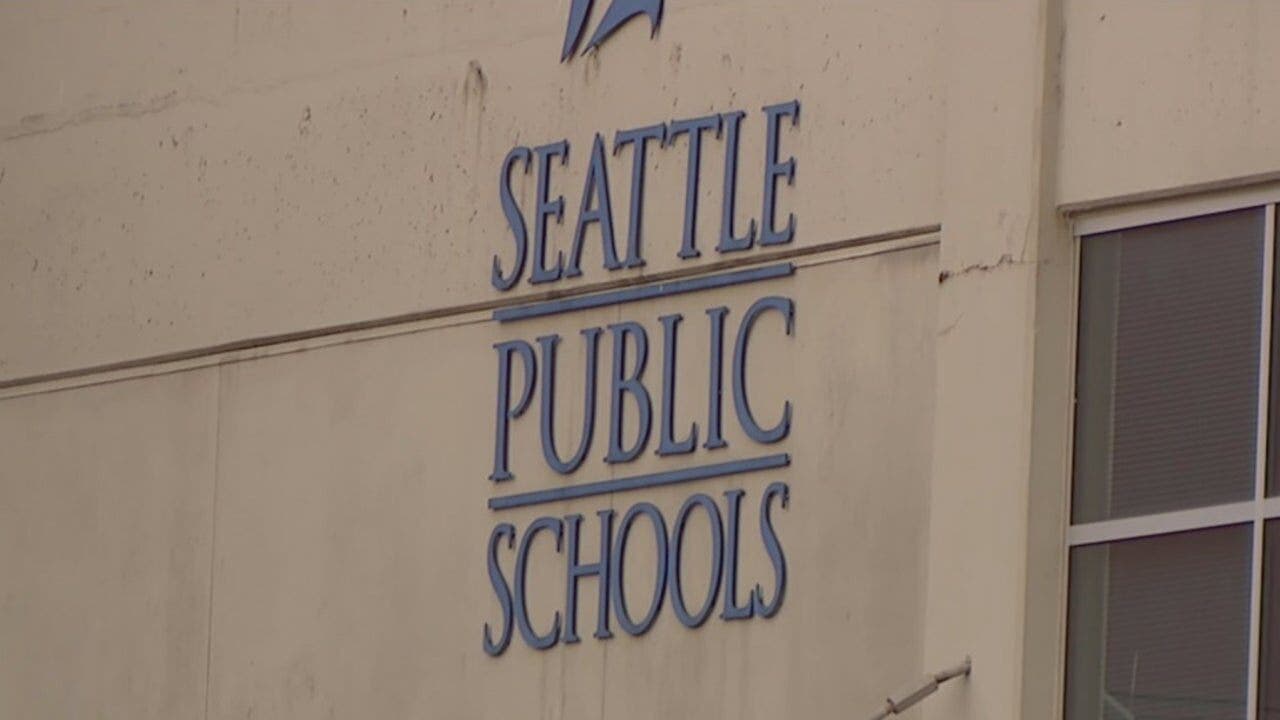
SEATTLE – Seattle Public Schools wrote to parents warning of scam emails asking for donations to “support a coach.”
According to a memo sent to families on Wednesday, some reported receiving fake emails posing as principals in the school district.
The emails were sent from a Gmail account and asked for a cellphone number, as well as asking for help buying gift cards to “thank a coach,” or similar.
What’s next:
Officials warn these messages are not from school district officials. SPS says they will never request personal information or gift cards in this way.
If you receive a suspicious email purporting to be SPS staff, officials urge you not to respond and report it immediately. All official district emails come from “seattleschools.org.”
The Source: Information in this story comes from a Seattle Public Schools memo.
MORE HEADLINES FROM FOX 13 SEATTLE
Gov. Ferguson details $4 billion in spending cuts to address WA deficit
Parents petition to remove WA substitute principal after past admissions of drug use
‘Oops I did a crime’: WA high school teacher charged with child porn
First WA measles case of 2025 confirmed in King County infant
4.5 magnitude earthquake hits near Friday Harbor
To get the best local news, weather and sports in Seattle for free, sign up for the daily FOX Seattle Newsletter.
Download the free FOX LOCAL app for mobile in the Apple App Store or Google Play Store for live Seattle news, top stories, weather updates and more local and national coverage, plus 24/7 streaming coverage from across the nation.
Seattle, WA
DK Metcalf has requested a trade from Seattle

Finally, some clarity on the DK Metcalf situation. Over the past week, it’s been reported that the Green Bay Packers were in conversations with the Seattle Seahawks for a trade of the receiver, while others reported that Metcalf wasn’t available in trade talks.
Now it’s official: Metcalf wants out of Seattle. According to ESPN’s Adam Schefter, Metcalf wants to play for a contender and has had “a series of discussions” with the Seahawks about it over several weeks. This news came shortly after Seattle released fellow Seattle wide receiver Tyler Lockett on Wednesday.
Why does Metcalf make sense in Green Bay? He’s essentially a more-developed version of Christian Watson, a big-body receiver who can play on the outside and take the top off of the defense. Without Watson for at least three-quarters of the season, due to his ACL tear, the Packers are in search of a player like Metcalf to keep defenses honest in 2025.
Green Bay struggled against man coverage last year, especially once Watson went down, in part because slot receiver Jayden Reed — considered the Packers’ “WR1” — was about half as productive against man coverage as he was against zone coverage. Metcalf wouldn’t just be a deep threat who could keep teams from running man coverages, but he would also help Green Bay’s route distribution against zone defense, as his speed and size alone command attention on a play-to-play basis. Metcalf wouldn’t just bring a true number-one outside receiver to the Packers, but it would help the production of Reed, Romeo Doubs, Dontayvion Wicks and Tucker Kraft, too.
Since being drafted in the second round of the 2019 draft, Metcalf has posted 428 receptions for 6,324 yards and 49 touchdowns through the air. He was named an All-Pro in 2020 and a Pro Bowler in 2020 and 2023.
Metcalf is in the final year of his contract with the Seahawks, so a trade for the receiver would probably come with a swift extension, too.
Interestingly, Packers general manager Brian Gutekunst mentioned in his end-of-the-year press conference back in January that Metcalf was one of two other players, along with Deebo Samuel, that the team considered picking in the second round of the 2019 draft when Green Bay selected Pro Bowl offensive lineman Elgton Jenkins. That isn’t nothing, considering how little Gutekunst tries to say in front of the press. Expect the Packers to be “in the conversation” for Metcalf’s services.
-

 Sports1 week ago
Sports1 week agoNHL trade board 7.0: The 4 Nations break is over, and things are about to get real
-

 News1 week ago
News1 week agoJustice Dept. Takes Broad View of Trump’s Jan. 6 Pardons
-

 World1 week ago
World1 week agoHamas says deal reached with Israel to release more than 600 Palestinians
-

 Science1 week ago
Science1 week agoKilling 166 million birds hasn’t helped poultry farmers stop H5N1. Is there a better way?
-

 News1 week ago
News1 week agoChristianity’s Decline in U.S. Appears to Have Halted, Major Study Shows
-
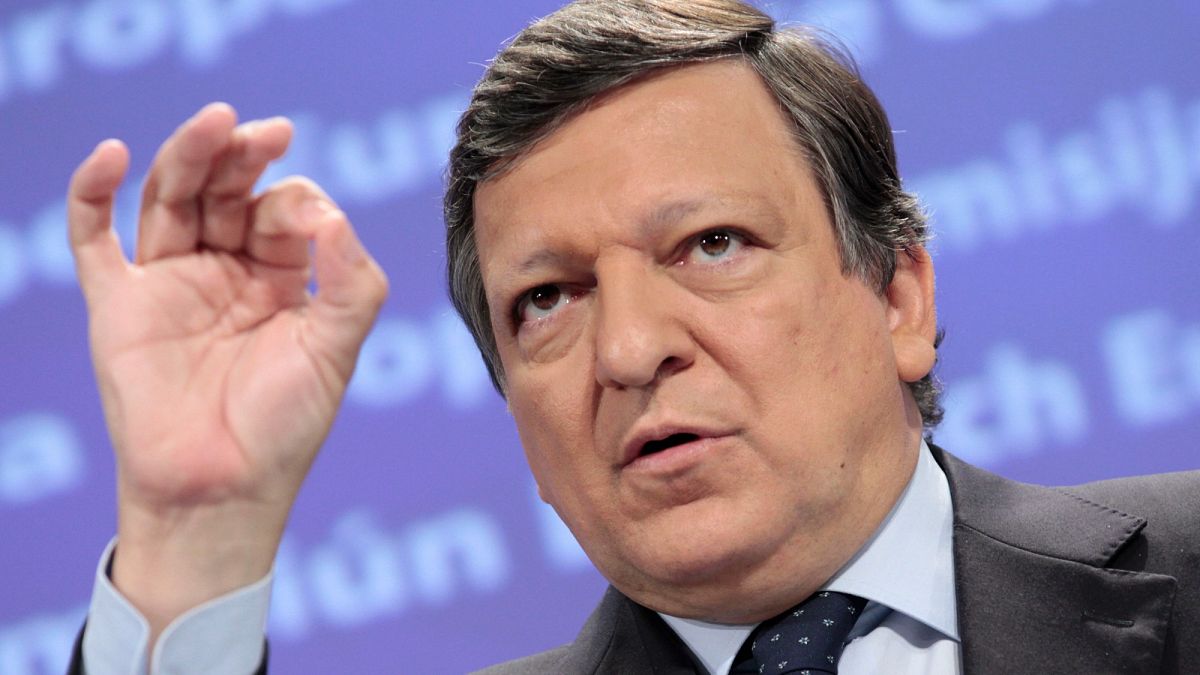
 World1 week ago
World1 week agoGermany's Merz ‘resolute and determined,' former EU chief Barroso says
-

 Technology1 week ago
Technology1 week agoMicrosoft makes Copilot Voice and Think Deeper free with unlimited use
-

 Culture1 week ago
Culture1 week agoOstriches, butt cheeks and relentless energy: How Austin Hedges became an indispensable MLB teammate




